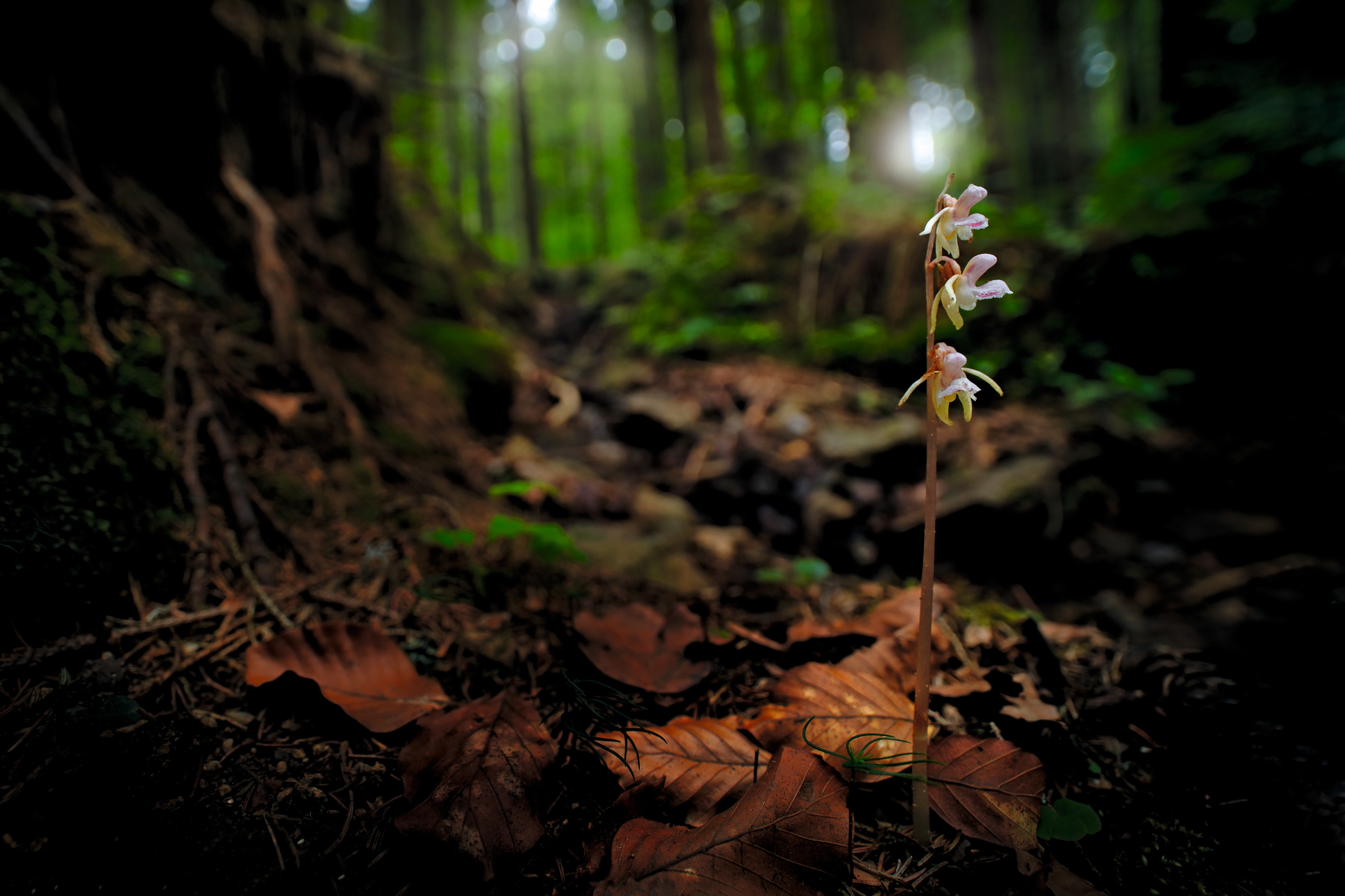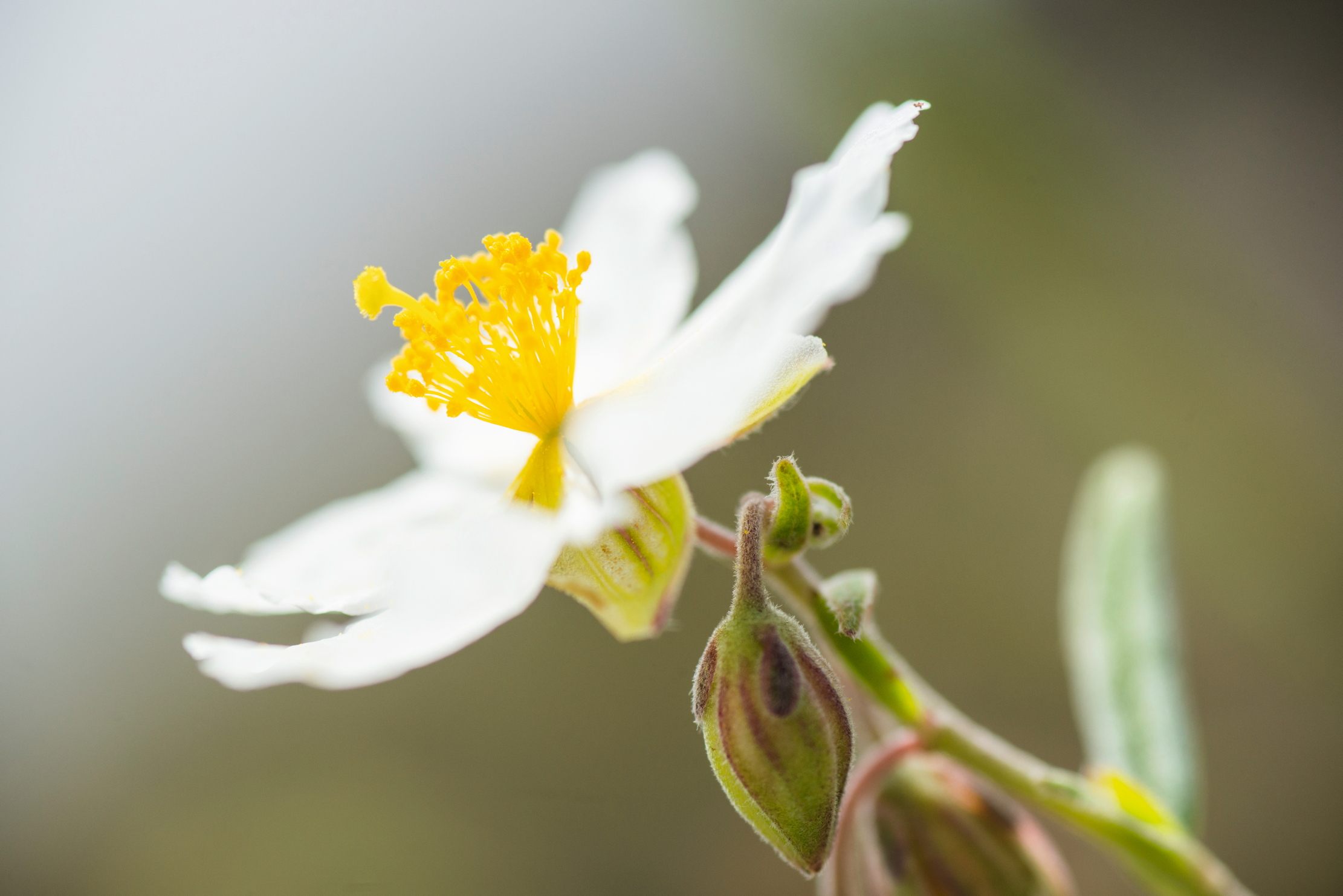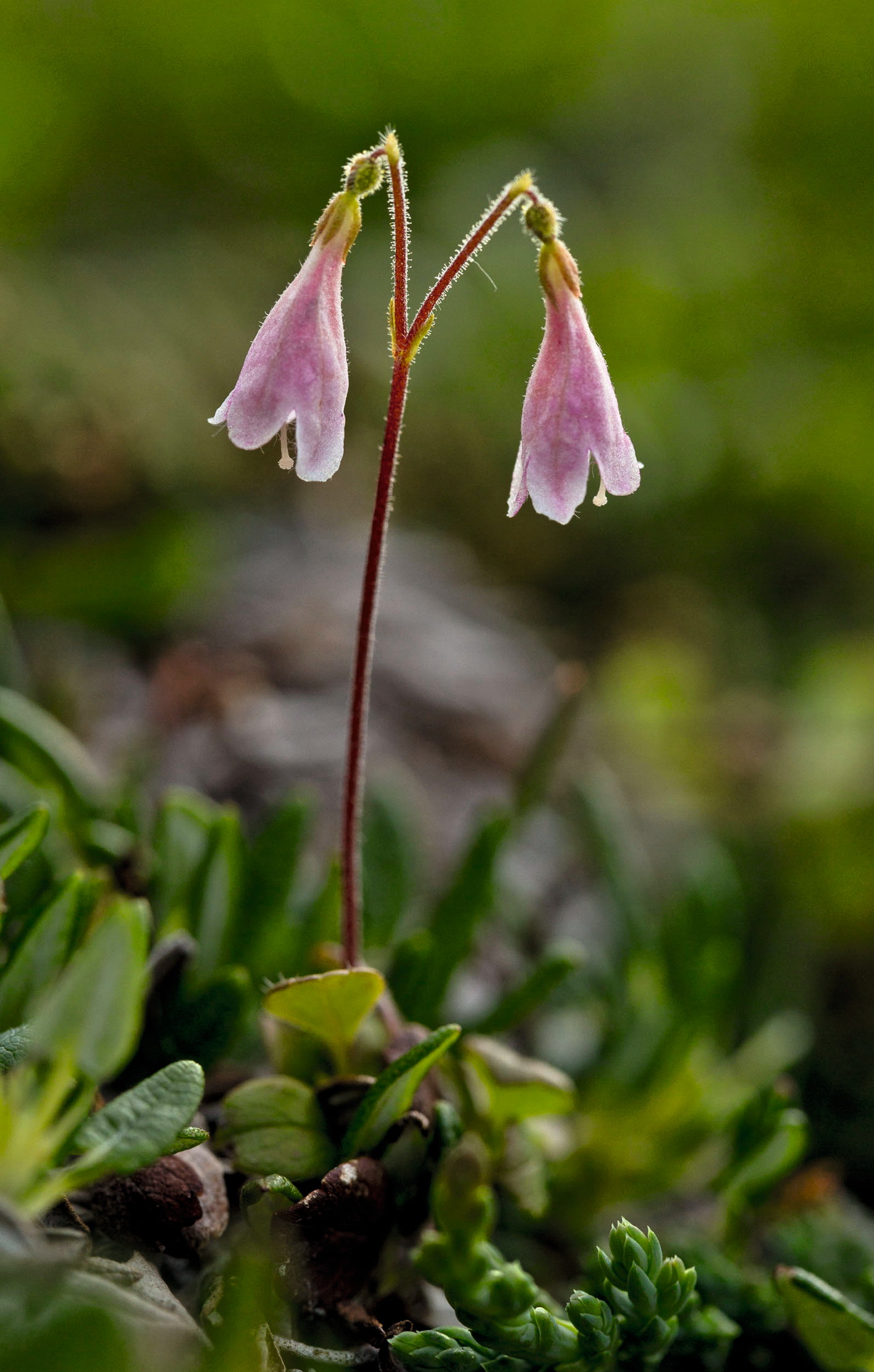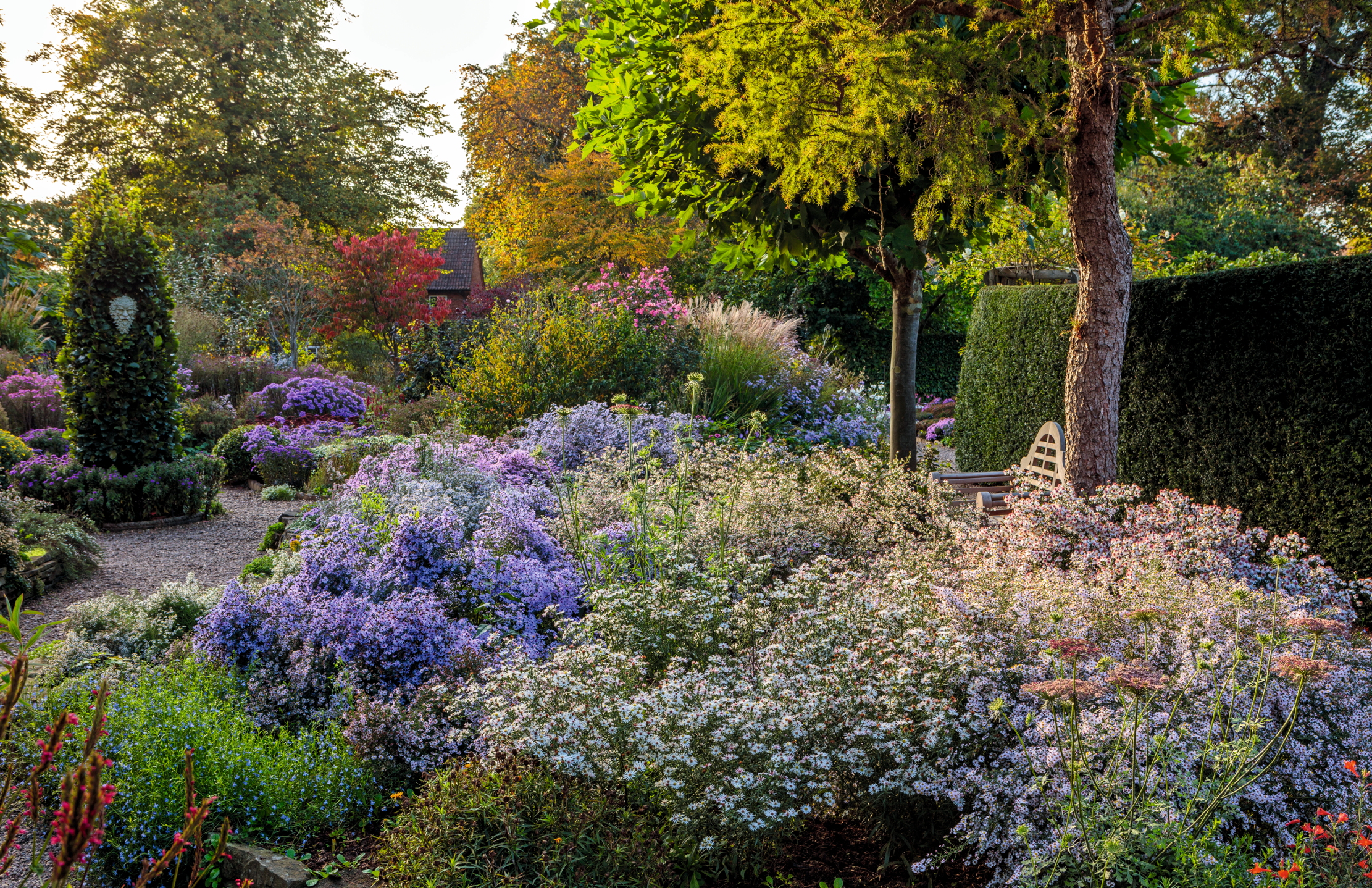Ghost hunters: the search for Britain's rarest flowers
Climbing, swimming and crawling, rare-plant hunters know no bounds when it comes to tracking down the botanical equivalent of the Holy Grail, says Peter Marren


The ghost orchid (Epipogium aphyllum) has been rediscovered. Often cited as the rarest plant in Britain, the ghost has flowered only twice in the past 30 years and, at one point, it was declared extinct. That we now know that it isn’t is largely thanks to a few dedicated ghost hunters who, year on year, religiously scoured the orchid’s old haunts, searching for the tiny plant that stands about 3in high with a couple of pendant flowers that resemble spiders.
The ghost orchid has no leaves; in fact, no green parts at all. It flowers in deep shade, down among the leafmould and, in no time at all, the flowers wither or are eaten by slugs. Most of this weird plant’s life is spent underground, living off the fungi that infect its rootstock. There is no knowing when — or even if — it will reappear.
The quest in search of the ghost orchid is the botanical equivalent of the Holy Grail. Yet, for the previous generation, that grail wasn’t the ghost, but another orchid, the lady’s slipper (Cypripedium calceolus). This fabulous bloom, a golden slipper held in a clasp of purple streamers, was simply too gorgeous for its own good. It was looted for garden rockeries until there was only a single plant left. It still survives — at about 100 years of age — living inside a cage. To avoid it being trampled or leading a trail straight to it, we are requested to keep away. Instead, other slippers of British stock have been carefully raised and planted out in some of its lost sites.
'In the past, rare-plant localities were kept secret and some, such as the locations of the ghost orchid, still are'
Orchids are our most popular wildflowers. Many are rare and their allure is increased by the amusing mimicry of the flowers, with their resemblance to bees, spiders, monkeys, lizards or little green men. However, many other rarities are as attractive, such as saxifrages, gentians and lilies. All rare flowers have allure. Chasing them down is a traditional botanical sport, like bird twitching, but with the difference that flowers, unlike birds, tend to stay in the same place.
The challenge is to work out where these places are. In the past, rare-plant localities were kept secret and some, such as the locations of the ghost orchid, still are. However, today, you can often discover their where abouts on the internet or in county floras and local compendiums of wild plants. Sometimes, their images can be spotted on nature reserve signs: ‘Welcome! Come right in and check out our monkey orchids!’
Yet challenges remain. Timing is everything, which becomes harder as our climate grows warmer and some plants flower earlier. You may need to walk a long way and search on your hands and knees at the end of your pilgrimage. Some plants involve climbing or even swimming, for there are rarities that grow underwater. I once spent a season trying to track down all the wildflowers I had never seen before.
Almost by definition, the space where any rare flower grows is out of the ordinary. Perhaps it is less disturbed, more natural, than usual. Perhaps there is less competition from more aggressive vegetation. It might be to do with shelter, pollinators or some subtle, undetectable feature. It’s probably not by chance that the places where our rare flowers grow are among the most beautiful parts of the British landscape.
Exquisite houses, the beauty of Nature, and how to get the most from your life, straight to your inbox.
In my new book, Rare Plants, I suggest three main reasons why a plant is rare. Taking a leaf out of Shakespeare’s Twelfth Night, I divide them into plants that are (as it were) born rare; others that have achieved rarity; and a third — and an unfortunately very large — group consisting of plants that have had rarity thrust upon them by mankind.

White rockrose (Helianthemum apenninum) is rare because it’s at the limit of its natural range in Britain. It’s confined to limestone cliffs in Somerset and Devon, where the beautiful displays of flowers remind us of the Cistus-covered hillsides of the Mediterranean. Conversely, a little plant called Iceland purslane (Koenigia islandica) is found only on a few mountain tops in the western isles of Scotland, in conditions that still resemble the last Ice Age (at which time it was common). Seeing it there is like being transported back to a time when the land was covered in snow, ice and gravel.
Plants that have become rare are those that, in their heyday, were more common. They have dwindled because of natural changes in the climate or because, for one reason or another, their habitat has diminished. An example is that pretty ‘fairy-flower’ of northern pinewoods, twinflower (Linnaea borealis). It is rare because it hardly ever sets seed. Something has gone wrong with its biology, dooming it to slow decline — unless we intervene.
Finally, there are the plants that are now rare because we have removed their habitat. High on the list are cornfield weeds, which were common before farming became mechanised and chemically assisted, but which now survive mainly in nature reserves. Such plants are ill-adapted to the modern environment. Rare flowers represent stability and continuity and modern land-use usually involves change, with harsh and radical upheavals. From the perspective of a wild plant, most human progress is a denial of Nature.

We know a lot about our wild flora because Britain has a 300-year-long tradition of field botany. We record plants in detail and try to understand what makes them tick — how they survive and interact with their environment. Although we can buy and manage land as nature reserves, it may be useless if we don’t understand the ecology of the plants we aim to protect.
On my trek to see all the wildflowers, I always enlisted the help of local botanists. It meant we could have a conversation, instead of simply finding a plant and taking its picture. To my surprise, every species, however obscure, seemed to have a guardian, someone who lived locally keeping an eye on it and monitoring its progress. They showed me their treasures with pride and, indeed, love: ‘Isn’t it a beauty?’ Often, it wasn’t particularly — wisps of tiny, dull florets or a sedge that looked to my eye like any other sedge.
Yet rarity lends a plant distinction. Look hard and you start to appreciate the subtleties, the details, the overall aesthetic in its setting, which botanists describe as its ‘jizz’. The plant is not only precious, but part of the meaning of a place, its genius loci. Meeting a rarity can be surprisingly moving.
We may never see a ghost orchid and grails are for the few, not the many. However, wildflowers give everyone pleasure and rare flowers thrill. There’s the anticipation, the search, (with luck) the encounter and the sense of something achieved. A love for rare and wonderful plants is surely one of the gateways to conservation.
Peter Marren is a British writer, journalist, and naturalist.

Asters: what they are, which ones to try and how to grow them
These late blooming plants 'promise future spring', making them essential for any garden.
Country Life is unlike any other magazine: the only glossy weekly on the newsstand and the only magazine that has been guest-edited by His Majesty The King not once, but twice. It is a celebration of modern rural life and all its diverse joys and pleasures — that was first published in Queen Victoria's Diamond Jubilee year. Our eclectic mixture of witty and informative content — from the most up-to-date property news and commentary and a coveted glimpse inside some of the UK's best houses and gardens, to gardening, the arts and interior design, written by experts in their field — still cannot be found in print or online, anywhere else.
